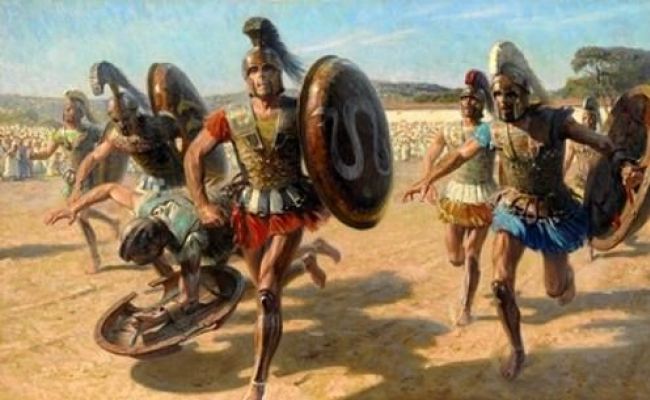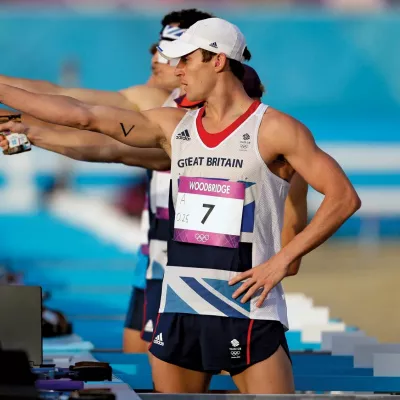Table of Contents
The 12 Greatest Olympic Sports from Ancient Greece
The Olympics are the world’s largest sporting event, bringing together competitors from all over the world to compete in a variety of disciplines. More than 200 countries are taking part. However, this event was inspired by the Olympic Games of ancient Greece.
From the 8th century BC through the 4th century AD, the Greeks held several athletic competitions in Olympia, Greece.
In ancient Greece, Olympic athletics were religious and athletic festivals held every four years in Zeus’ sanctuary.
It included athletic and combat sports, which were more religious in nature.
This old custom gave rise to the modern Olympics.
However, the majority of the sports in which athletes presently participate are distinct.
Few athletic competitions have survived, and most ancient games have been abandoned.
As a result, we’ve compiled a list of some of the most amazing ancient Greek Olympic sports.
Let us travel back in time to learn about some of the most spectacular sporting events in which the ancient Greeks took part.
Olympic Sports from Ancient Greece 2022
We compiled this list using numerous sources such as Worldhistory, the Olympics, and so on.
But, before we get into the details, have a look at the list below.
| Olympic Sports | Date in BCE (Before Common Era) |
| 12. Competition for trumpeters and heralds | 396 BCE |
| 11. Synoris | 408 BCE |
| 10. Keles | 648 BCE |
| 9. Hoplitodromos | 520 BCE |
| 8. Tethrippon | 680 BCE |
| 7. Pentathlon | 780 BCE |
| 6. Pankration | 648 BCE |
| 5. Boxing | 688 BCE |
| 4. Wrestling | 708 BCE |
| 3. Discus Throw | 776 BCE |
| 2. Long Jump | 780 BCE |
| 1. Running | 776 BCE to 728 BCE |
12. Trumpeter and Herald Competitions
We begin our list with an odd occurrence that many people would not consider a sport.
Competitions for trumpeters and heralds existed in ancient Greece.
Yes, you read that correctly, and it was a sporting event in ancient Greece.
Only in 396 BCE did the Grecians add competitions for trumpeters and heralds.
Initially, though, the trumpeters and heralds were solely used for organizational purposes.
The competition took place on the first day.
The contest was won by the person whose sound was louder and clearer.
Both competitions were won by Elis residents when the game was initially introduced.
The trumpeters and heralds, like the athletes, continued to compete in the old Olympic games.
The competition winners were privileged to announce the winners at the official prize-giving event on the final day.
Synoris 11
There were numerous sporting tournaments involving horses and chariots in Ancient Greece.
It was because horse racing was nearly entirely attended by nobles and aristocrats.
Synoris was one of the competitions involving two horses and a chariot.
The first sporting competition took place in 408 BCE.
However, in 268 BCE, an earlier version of employing foals over three circuits was added.
10. Keles
Keles is the tenth ancient Greek Olympic sport on our list.
It is also a horse-related sport that dates back to 648 BCE.
There was an older version of the sport for foals around 256 BCE.
The game consisted of six circuits.
Many historians believe that the first Keles contest winner was from Thessaly.
The region, located in northern Greece, was well-known for horse breeding.
Hoplitodromos 9
The Hoplitodromos was an ancient sort of footrace.
The word’s English equivalent is “race of the Hoplites.”
The sport was added to the Olympics in 520 BCE and was the last footrace to be included.
The contestants had to race while wearing hoplite armor, which included helmets, shields, and spears, hence the name Hoplitodromos.

The armors were constructed from heavy materials and weighed at least six kilograms.
The sport tested the participants’ muscular strength more than their endurance.
It was one of the shortest foot races, lasting two to four stadium lengths.
Hoplitodromos was a military training exercise as well as an athletic competition.
It was traditionally the final event of the Olympic Games.
Tethrippon is a pesticide
Another horse chariot race sport is number eight on the ancient Greek Olympic list.
Tethrippon was a chariot race with four horses.
The game was invented in 680 BCE.
The chariot racer would have to gallop around the hippodrome ten or twelve times.
An early kind of chariot racing used foals and ran over eight circuits.
The first version of the race began around 384 BCE.
7. The pentathlon
Following that, we have a sport with five events.
The name is a combination of two words: pente, which means “five,” and Athlon, which means “competition.”
The game was invented in 708 BCE. The sporting event was held on a single day.
Jumping, discus throwing, stadion, javelin, and wrestling were all featured.
The Pentathletes were the athletes who competed in the sporting event.
Furthermore, they were thought to be the most skilled athletes.
Furthermore, sports training was frequently included as part of military service.
Pentathlon was supposed to be beneficial in battle.
Furthermore, sports training was frequently included as part of military service.
However, there is some disagreement about who won the overall event.
Historians believe that the three triumphs in the five events contributed to the sport’s triumph.
Sixth. Pankration
Pankration was founded in 648 BCE.
It is a hybrid of boxing and wrestling.
Furthermore, the sport was one of the most violent Olympic games in ancient Greece.
It was a game of empty-handed submission.
Except for biting and gouging, all other moves were permissible.
Similarly, unlike in boxing, the athletes could use kicks, grips, and chokes on the ground rather than ruining leather thongs.
The sport resembled modern-day mixed martial arts.
The most popular method of determining the Pankration competition winner was through submission.
However, knockouts were also common.
Pankration, like most combat sports in ancient Greece, was part of military training.
Five. Boxing
Boxing is our fifth ancient Greek Olympic sport.
There are several legends about the origins of boxing in Greek history.
Boxing, on the other hand, began at the ancient Olympic Games in 688 BCE.
Boxers used leather straps known as humanities around their hands, wrists, and sometimes their breasts.
The leather also served as protection, but the face and head were uncovered.
In ancient Greece, boxing had few restrictions.
The only moves that were not permitted were low strikes and holding.
In later years, the use of himantes evolved into fatal weaponry.
Sometimes the athletes would throw metal shards at their opponents, killing them.
It caused severe injuries and sometimes even deaths.
four. wrestling
Wrestling was a popular sport in ancient Greece.
The sport first appeared in the ancient Greek Olympic games in 708 BCE.
It was the first non-footrace competition to be included in the Olympic Games.
The game was played in the style of an elimination competition.
To win, the contender would have to toss their opponents on the ground three times.
Wrestling was one of the five events in the Pentathlon and a sport of strength.
It was held in a single square plethron or stremma.
As previously stated, the Olympic games were a religious event in ancient Greece; wrestling represented Heracles in Greek mythology.
3. Discus Toss
Since 776 BCE, the discus throw has been a part of the Olympic Games.
The sports technique was very close to the present discus throw technique.
Throwing discus requires rhythm and precision, therefore the sport in ancient Greece demonstrated the athlete’s strength and control.
The distance thrown by a discus is determined by the thrower’s bodyweight, discus weight, and skills.
The discus was originally composed of stone, iron, bronze, or lead.
Similarly, the discus was shaped like a flying saucer and came in a variety of sizes.
The sport was one of five in the Pentathlon, and its score was combined with the other four to determine the winner.
2. Lengthy Jump
The long jump is the second most popular ancient Greek Olympic sport.
The game, however, was not a separate event, but rather a component of the Pentathlon.
Jumpers bounced on the sandpit in ancient Greece, just as they do today.
The main difference was that jumpers in ancient times held weights or halters when jumping.
The weights ranged from 1.5 to 2 kg.
During the jump, the jumper held the weight or halters, thrust behind his back, and dropped during landing.
As a result, the jumpers were able to jump longer and land more consistently.
Long jumps in ancient Greece were accompanied by flute music for greater coordination, which was a pleasant fact.
Also, read Giba, Alphonso Davies, Marco Fabian
1. jogging
And we have running as our number one ancient Greek Olympic sport.
It is the oldest and most important Olympic sport, and it is divided into three forms.
From 776 BCE until 728 BCE, numerous types of sports were formed.
Its variations included the stade race, dialogs, and dolichos.
The stade race focused on the athlete’s speed. The racers would have to run the entire length of the Olympia track.
The track length was around 200 meters.
Meanwhile, diaulos were two-stadium-length foot races, and Dolichos were seven to twenty-four-stadium-length foot races.
The athletes ran on the sand surface, which was known as the stadion.




